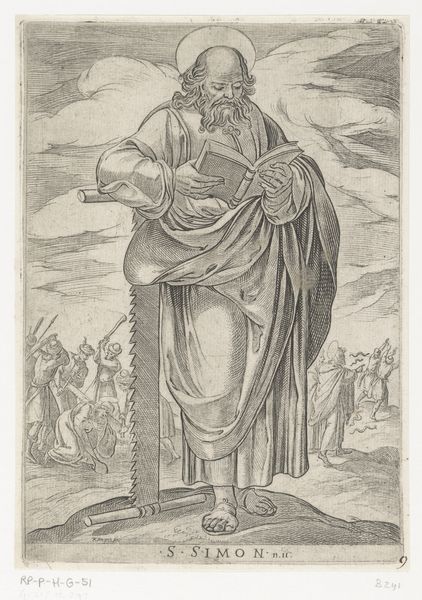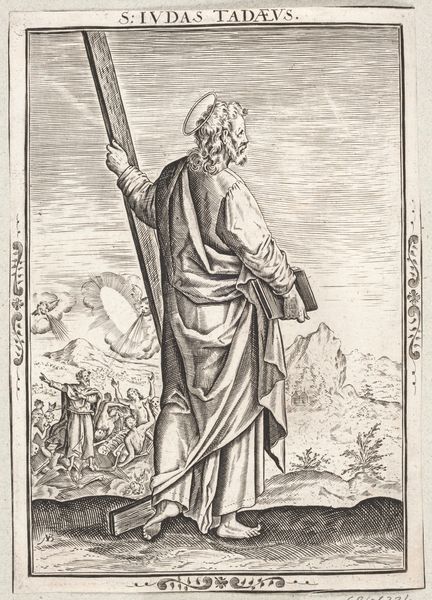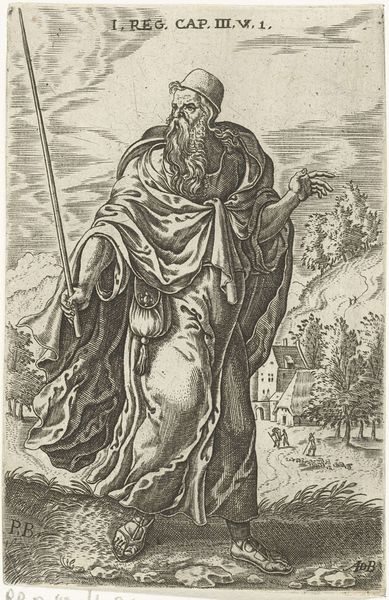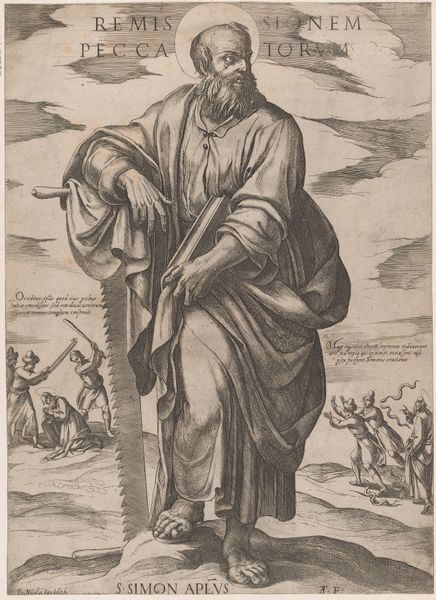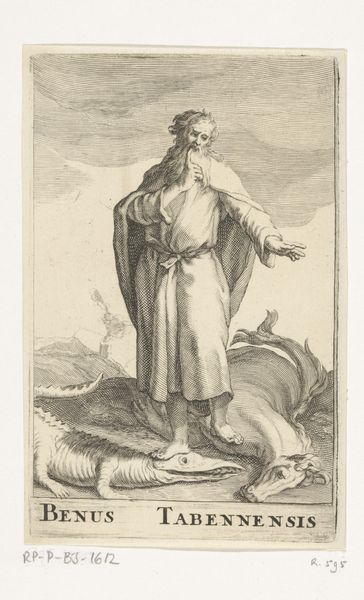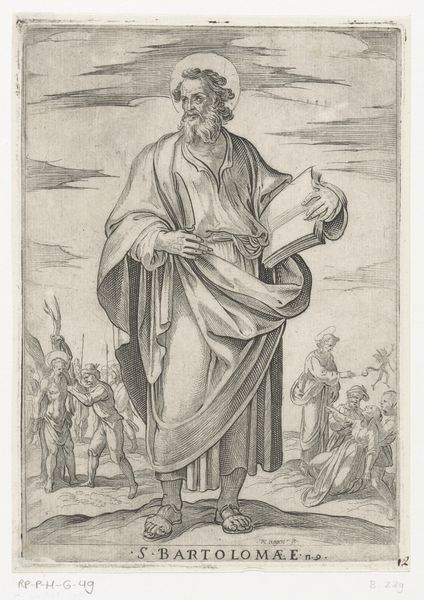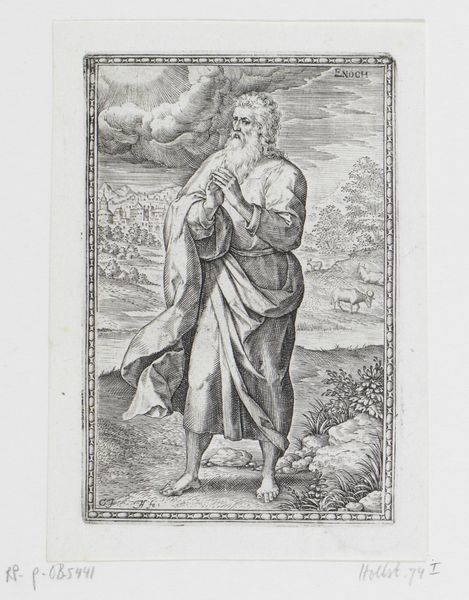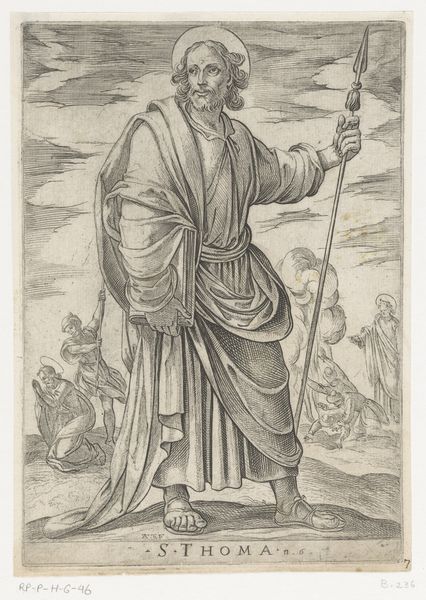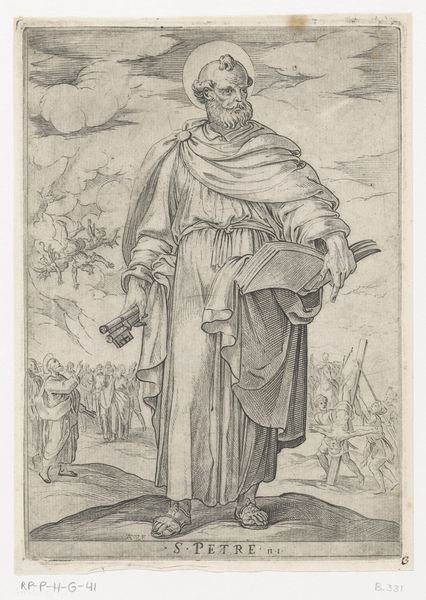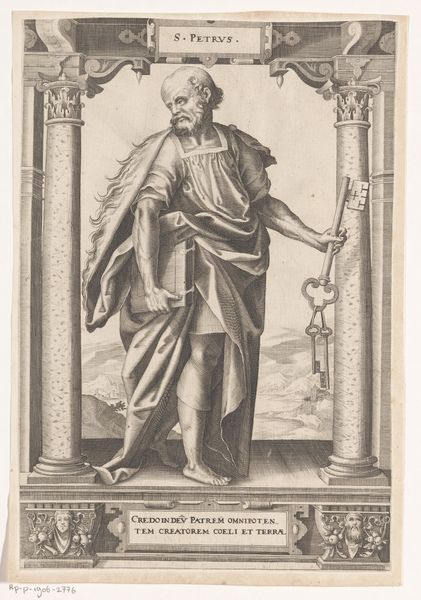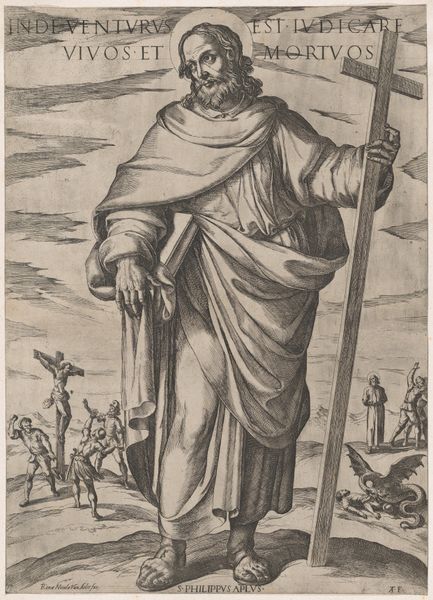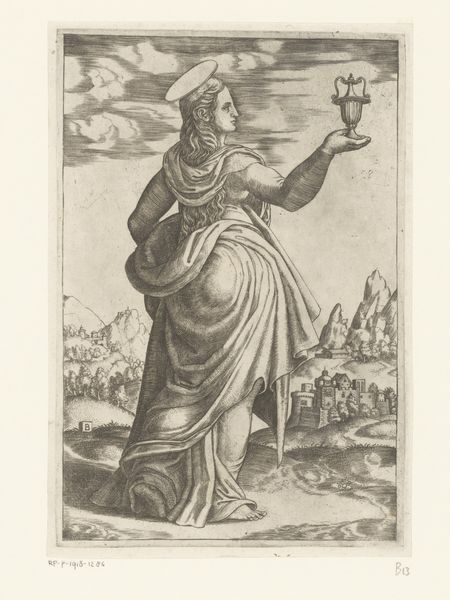
print, engraving
#
baroque
# print
#
pen illustration
#
pencil sketch
#
old engraving style
#
caricature
#
figuration
#
line
#
history-painting
#
engraving
#
sword
Dimensions: height 202 mm, width 143 mm
Copyright: Rijks Museum: Open Domain
Curator: Look at the dramatic presentation of "De heilige Paulus," or "Saint Paul," an engraving created sometime between 1565 and 1630, now held here at the Rijksmuseum. It’s attributed to Antonio Tempesta. Editor: My first impression is dominated by this monumental figure – almost looming. The strong lines and the somewhat theatrical staging give it a very pronounced emotional quality. Is that sword supposed to be threatening? Curator: The sword is a crucial attribute, symbolizing Paul’s martyrdom and the unwavering strength of his convictions, even unto death. Consider the socio-political role of such imagery during the Counter-Reformation, where reaffirming key figures like Paul served as powerful propaganda. Editor: Indeed. I'm captivated by the almost excessive details. The draping of his cloak, those craggy rocks, and the small scenes playing out in the background—it's all laden with symbolic weight. The martyrdom, the preaching… it's like a visual encyclopedia of Paul's life and influence. Curator: The artistic choices reflect a desire to connect the viewer directly to biblical narratives and teachings in a society grappling with immense religious and political upheaval. Art became a tool. It reinforced societal expectations of how you might behave. Editor: Looking closer, the stark contrast emphasizes Paul's imposing presence and emphasizes the contrast of faith and violence—he holds the book and sword simultaneously. In the past I've come to see Paul as more conflicted, someone who used violence as a tool. But I agree. Visually and emotionally it’s such an uncomplicated message in the picture. Curator: I concur; though the visual drama almost borders on baroque theatricality, remember the political purposes, which become crucial to decoding why and how it was presented to the public. And don’t miss the implications for interpreting not just faith but how figures are framed. Editor: A compelling reminder to examine how deeply held convictions get visually translated and transmitted. I will give this work some thought as I study iconography in relation to the history! Curator: A vital, multifaceted dialogue is necessary. We’ll delve deeper with upcoming programming.
Comments
No comments
Be the first to comment and join the conversation on the ultimate creative platform.

